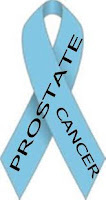According to Denver's ABC news affiliate,
"This year, one in six men will be diagnosed with prostate cancer but 207,000 women will hear, 'You have breast cancer.' Furthermore, 63 percent of women will find out they have ovarian cancer after it has spread."Before accepting these numbers as credible, it would be a good idea to check the facts. This is something most students don't do. Let's see how it would play out if they cited the article without trying to verify the facts.
Let's start with "one in six men will be diagnosed with prostate cancer." That should be easy to check. Query: prostate cancer rate
First hit: American Cancer Society: "About 1 man in 6 will be diagnosed with prostate cancer during his lifetime."
Second hit: National Cancer Institute: "Based on rates from 2006-2008, 16.48% of men born today will be diagnosed with cancer of the prostate at some time during their lifetime." That's about 1 in 6.
It appears Channel 7 got one fact right (1 in 6) and one fact wrong ('this year,' as opposed to a 'lifetime'). If you skim the comments at the bottom of Channel 7's article, one reader states exactly the same thing.
So, while the source seems credible (ABC News affiliate), other sources do not verify the first set of numbers. The student who cites this has inaccurate facts.
What about the other numbers? What do your students find?














No comments:
Post a Comment